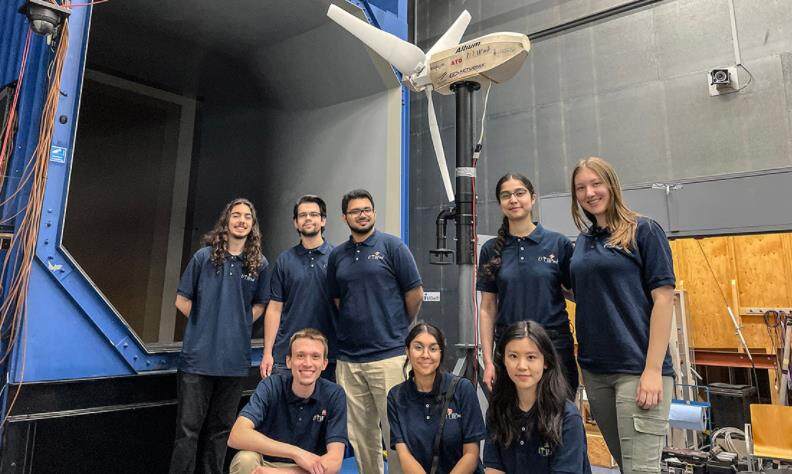In their first-ever competition, UTWind – a team of undergraduate and graduate students from the University of Toronto’s Faculty of Applied Science & Engineering – has taken the top prize in an international challenge to design and build a small-scale wind turbine.


“While we always strived to be a competitive team from the beginning and knew that we had a strong design, we definitely didn’t expect to win first place,” says David Petriw, a third-year materials science and engineering student who is a member of UTWind.
“The morale of the team is at an all-time high, and we are going to celebrate this win in a big way.”
The International Small Wind Turbine Contest (ISWTC) is hosted annually by Hanze University of Applied Sciences in Groningen, Netherlands. To clinch first place, UTWind edged out teams from Denmark, Germany, Poland and Egypt.
“The goal of ISWTC is to build and demonstrate a wind turbine designed for rural regions in Sub-Saharan Africa,” says Andrew Ilersich, aPhD candidate at the U of T Institute for Aerospace Studies (UTIAS) and aerodynamics lead for UTWind.
“Every aspect of our design had to be tailored to, or at least compatible with, the region it would be sold and operated in. We also had to show that our design was sustainable, being made from recyclable, low-cost, and locally available materials.”
Unlike the large turbines used in commercial wind farms, which can rise to over 100 metres and generate megawatts of power each, small wind turbines (SWTs) are designed for generation on scales from a few hundred watts to a few kilowatts.
To win the contest, teams must demonstrate top-of-class performance across a number of criteria, including power generation, cut-in speed, estimated annual energy production and coefficient of power, which is a measure of the turbine’s efficiency.
Performance was measured at the Open Jet Facility wind tunnel at Delft University of Technology. After that, the teams headed to the Science of Making Torque Conference in Delft, to present their business case.







































